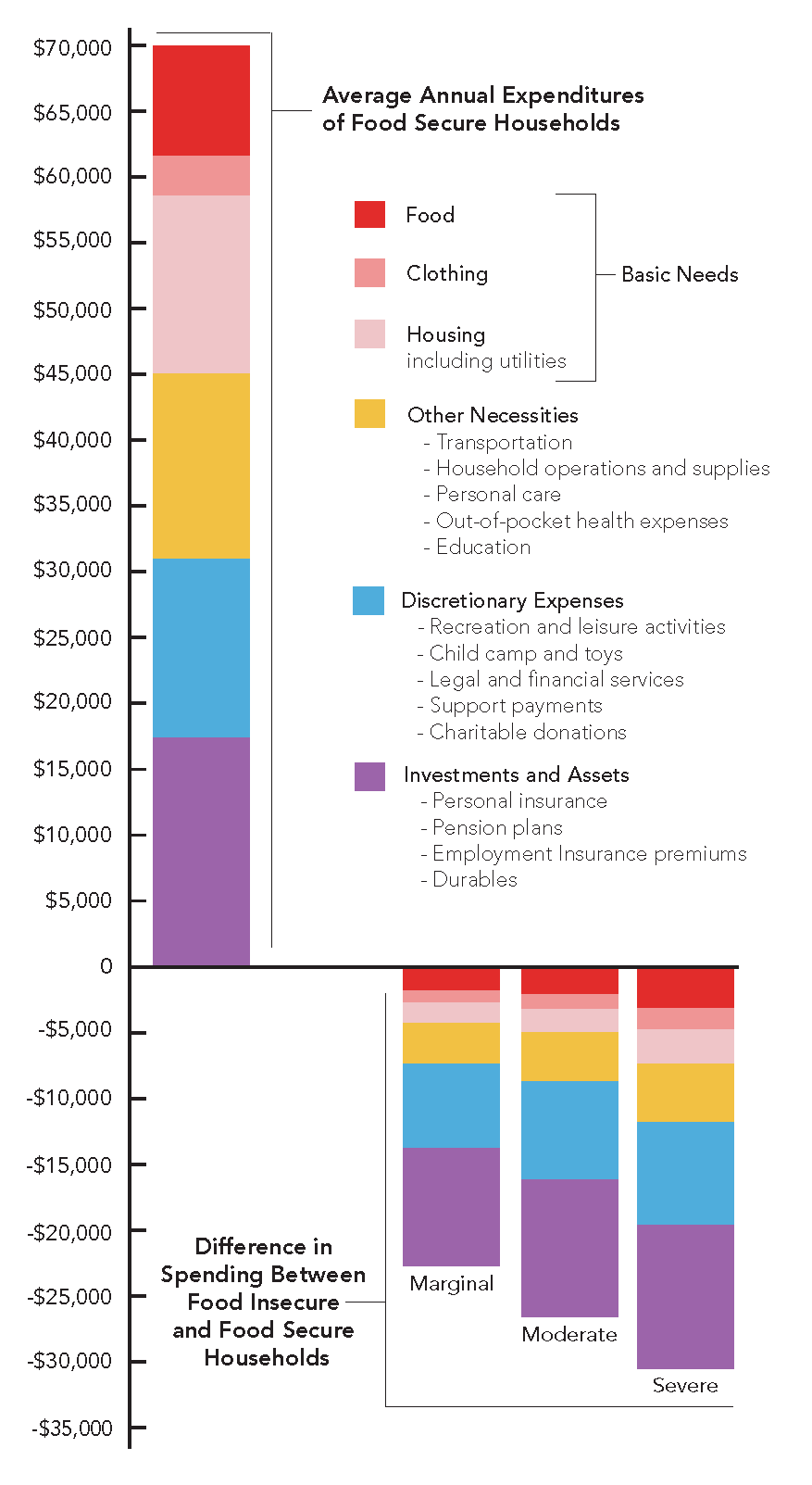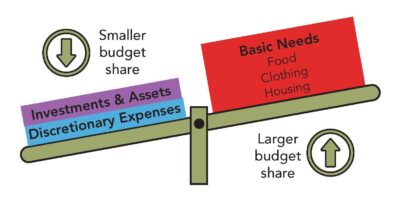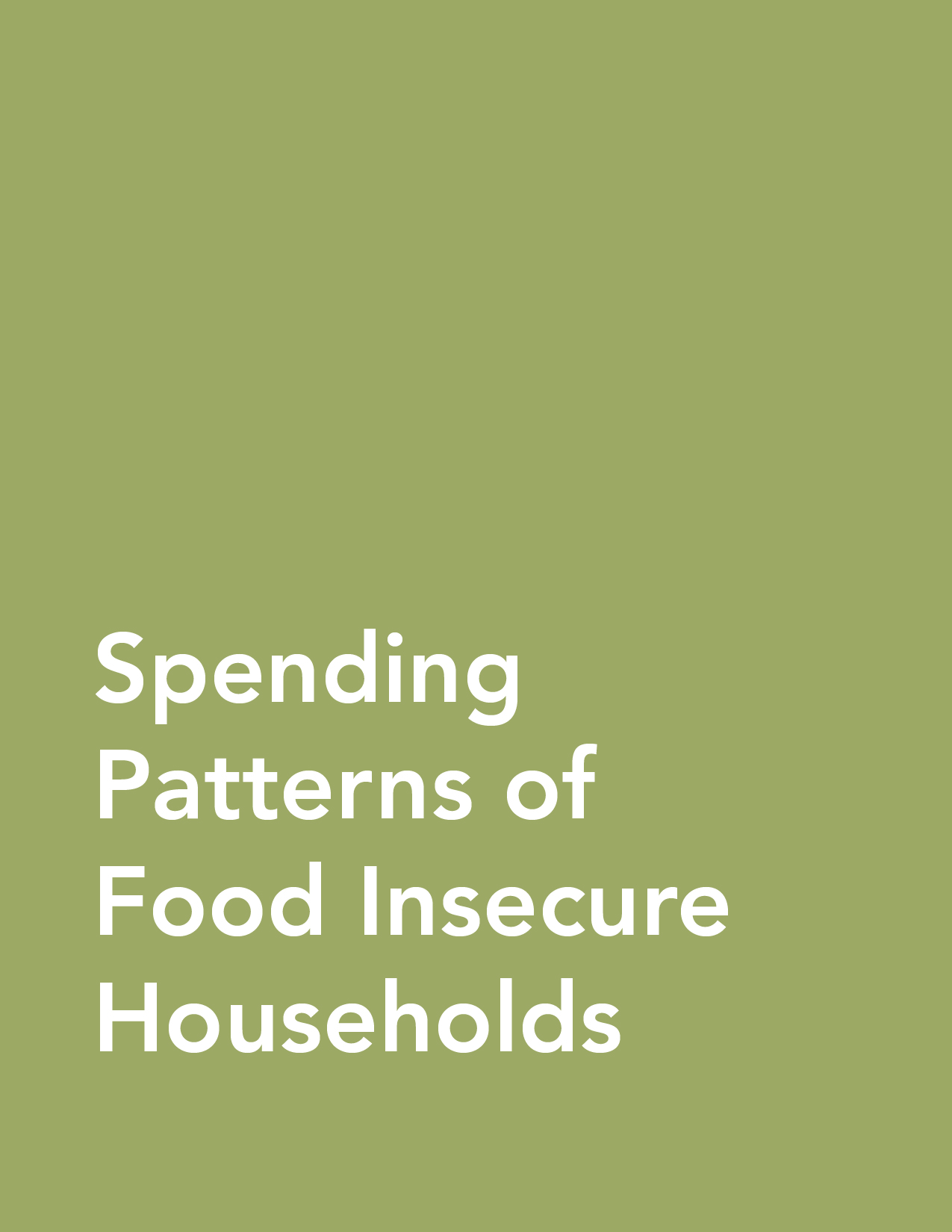The Spending Patterns of Food Insecure Households
May 18, 2018
Household food insecurity – the inadequate or insecure access to food due to financial constraints – is a serious public health problem in Canada. It negatively impacts physical, mental, and social health, and costs our health care system considerably.
Statistics Canada began monitoring household food insecurity in 2005 through the Canadian Community Health Survey (CCHS).1 The most recent national prevalence estimate from 2012 showed that 1 in 8 households in Canada are food insecure. This amounts to over 4 million Canadians, including 1.15 million children, living in homes that struggle to put food on the table.
In 2010, food insecurity was measured in the Survey of Household Spending, which collected detailed information on the expenditures of more than 9000 households living in the ten provinces. Analyses of these data show that the spending patterns of food insecure households differ markedly from those of food secure households.2
Food insecure households spend substantially less than food secure households on everything.
As the severity of household food insecurity increases, spending decreases because households have fewer economic resources.

Food insecure households prioritize spending on basic needs above all else.
Compared to food secure households, food insecure households spend a larger proportion of their budget on basic needs (food, clothing, and housing). This is achieved by allocating fewer resources to discretionary expenses, investments, and assets.

These findings, together with previous research,3 indicate that given more money, food insecure households will spend more on basic needs. This adds to the growing body of evidence that improving the economic resources of vulnerable households will reduce food insecurity.4, 5, 6, 7, 8, 9
Audio
Listen to Dr. Andrée-Anne Fafard St-Germain discuss the findings and importance of this research.(4 minutes) [Download MP3]
References
- Tarasuk, V., Mitchell, A., Dachner, N. (2014). Household food insecurity in Canada, 2012. Toronto: Research to identify policy options to reduce food insecurity (PROOF). Retrieved from http://proof.utoronto.ca.
- Fafard St-Germain, A. A., & Tarasuk, V. (2018). Prioritization of the essentials in the spending patterns of Canadian households experiencing food insecurity. Public health nutrition, 21(11), 2065–2078. https://doi.org/10.1017/S1368980018000472
- Jones, L.E., Milligan, K.S., & Stabile, M. (2015). Child cash benefits and family expenditures: evidence from the national child benefit. NBER Working Paper no. 21101. Cambridge, MA: National Bureau of Economic Research. https://onlinelibrary.wiley.com/doi/10.1111/caje.12409
- Loopstra, R. & Tarasuk, V. (2013). Severity of household food insecurity is sensitive to change in household income and employment status among low-income families. Journal of Nutrition, 143, 1316-1323. https://academic.oup.com/jn/article/143/8/1316/4571635
- McIntyre, L., Pow, J., & Emery, J.C. (2015). A path analysis of recurrently food-insecure Canadians discerns employment, income, and negative health effects. Journal of Poverty, 19(1), 71-87. https://www.tandfonline.com/doi/full/10.1080/10875549.2014.979462
- Loopstra, R., Dachner, N., & Tarasuk, V. (2015). An exploration of the unprecedented decline in the prevalence of household food insecurity in Newfoundland and Labrador, 2007–2012. Canadian Public Policy, 41(3), 191-206.
- Li, N., Dachner, N., & Tarasuk, V. (2016). The impact of changes in social policies on household food insecurity in British Columbia, 2005–2012. Preventive Medicine, 93, 151-158. https://www.utpjournals.press/doi/abs/10.3138/cpp.2014-080
- McIntyre, L., Dutton, D.J., Kwok, C. et al. (2016). Reduction of food insecurity among low-income Canadian seniors as a likely impact of a guaranteed annual income. Canadian Public Policy, 42(3), 274-286. https://www.utpjournals.press/doi/abs/10.3138/cpp.2015-069
- Ionescu-Ittu, R., Glymour, M.M., & Kaufman, J.S. (2014). A difference-in-differences approach to estimate the effect of income-supplementation on food insecurity. Preventive Medicine, 70, 108-116. https://www.sciencedirect.com/science/article/abs/pii/S0091743514004605

